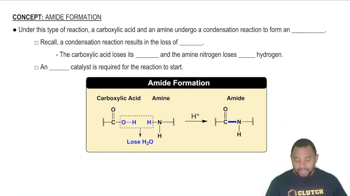Here are the essential concepts you must grasp in order to answer the question correctly.
Octet Rule
The octet rule is a chemical principle stating that atoms tend to gain, lose, or share electrons to achieve a full outer shell of eight electrons, resembling the electron configuration of noble gases. This rule helps explain the stability of atoms and their tendency to form ions or covalent bonds.
Recommended video:
Ions and the Octet Rule Concept 1
Magnesium Ion Formation
Magnesium, with an atomic number of 12, has two electrons in its outermost shell. To achieve a stable octet configuration, magnesium tends to lose these two valence electrons, resulting in the formation of a positively charged magnesium ion (Mg²⁺). This loss of electrons allows magnesium to attain a stable electron configuration similar to neon.
Recommended video:
Amide Formation Concept 1
Ionic Bonding
Ionic bonding occurs when atoms transfer electrons to achieve full outer shells, leading to the formation of charged ions. In the case of magnesium, when it loses its two electrons, it can bond with nonmetals like chlorine, which gain electrons, resulting in the formation of ionic compounds such as magnesium chloride (MgCl₂). This process illustrates the practical application of the octet rule in chemical bonding.
Recommended video:
 Verified step by step guidance
Verified step by step guidance Verified video answer for a similar problem:
Verified video answer for a similar problem:



 2:50m
2:50m